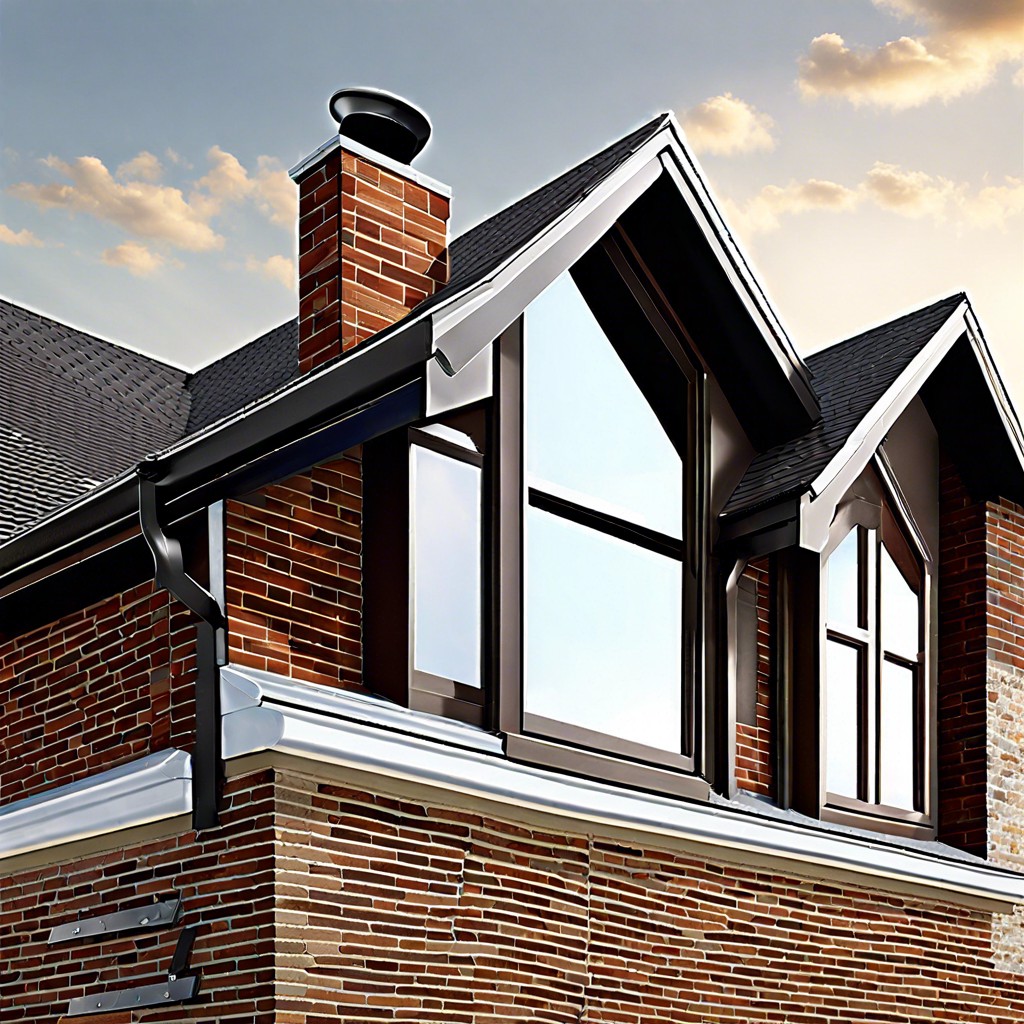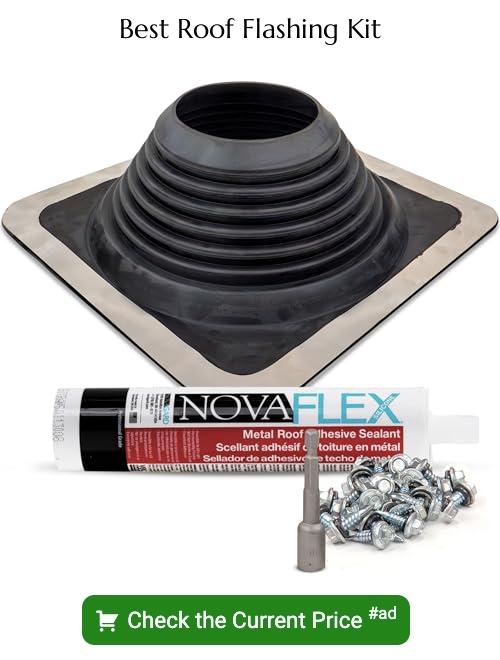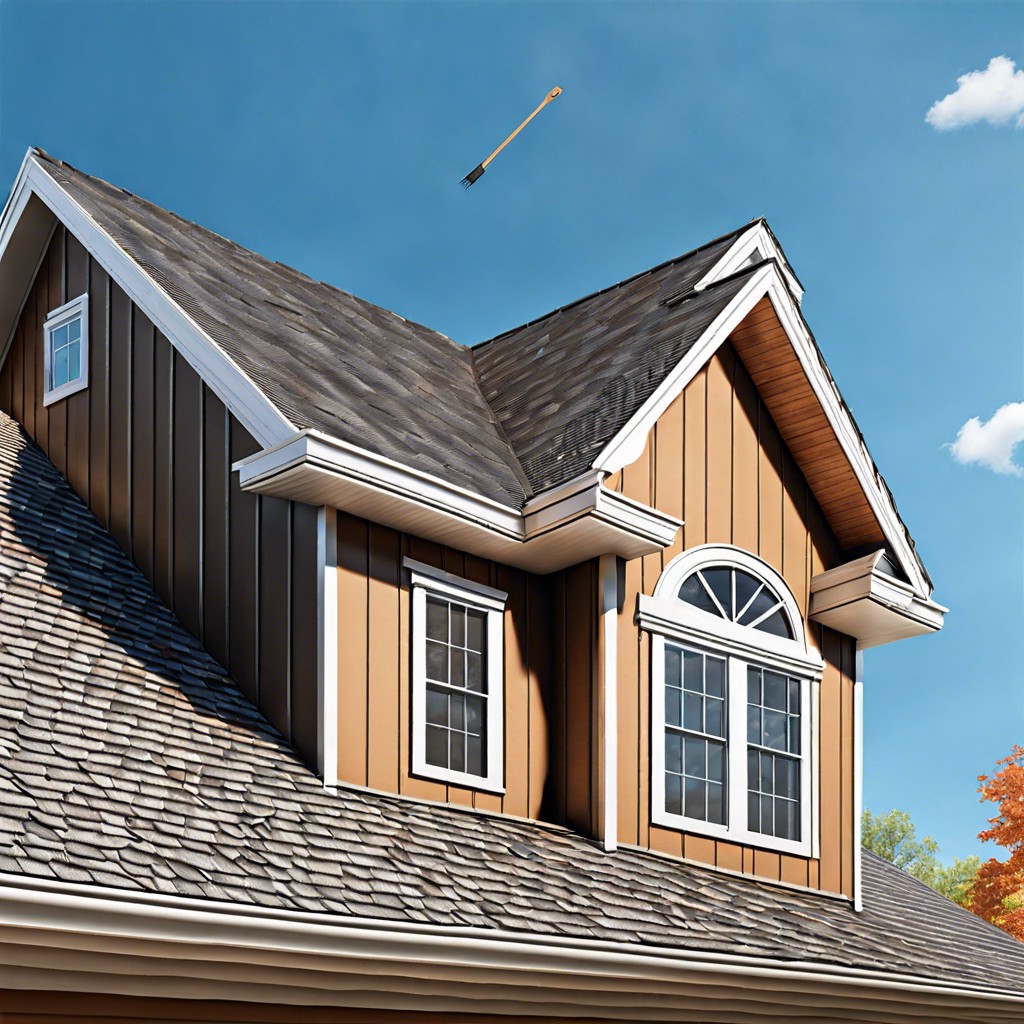Last updated on
In this how-to article, learn the step-by-step process of properly installing wall flashing to prevent water penetration at the intersection of your roof and walls.
Key takeaways:
- Wall flashing prevents water penetration at roof and wall intersections.
- Materials for wall flashing include metals like copper and aluminum, as well as synthetic options.
- Proper installation techniques involve following manufacturer’s instructions and ensuring a secure bond.
- Leaks in wall flashing can be identified through water stains, visual inspection, and dampness or mold.
- Preventative measures include regular inspections, keeping areas debris-free, proper sealing during modifications, and replacing old sealants.
Purpose of Wall Flashing On Roofs

Wall flashing serves as a critical defense mechanism for the junction between a roof and a vertical surface, such as a wall or chimney. This component channels water away from these intersections, preventing moisture from penetrating and potentially causing damage to both the roof and the underlying structure. It acts much like a shingled system—a layered design that ensures water is directed downwards and away, never allowing it to travel backward against gravity.
The protection offered by wall flashing is not limited to water. It also shields against other elements, such as wind-driven rain, which can be particularly infiltrating, and the freeze-thaw cycle that can cause materials to expand and contract leading to gaps and eventual leaks. Well-designed and properly installed wall flashing accommodates for building movement, reducing the risk of tearing or buckling under the stress of daily expansion and contraction.
Additionally, flashing materials are typically corrosion-resistant. By choosing appropriate materials and ensuring a secure installation, longevity of the roof and building envelope is significantly extended. It minimizes the need for frequent repairs and increases the overall efficacy of the roofing system in protecting a structure from the elements.
Materials Used for Wall Flashing
Choosing the right material is crucial for the effectiveness and longevity of wall flashing. Metals like copper, aluminum, and galvanized steel are popular due to their durability and resistance to corrosion. Copper is especially long-lasting and develops a protective patina over time, though it is generally more costly. Aluminum is a more budget-friendly option but must be coated to prevent corrosion, especially in coastal areas where salt spray is common.
Lead, once common due to its flexibility and ease of installation, is less frequently used today due to environmental and health concerns. It is still sometimes found in historic restorations where matching the original materials is necessary.
For a more modern approach, synthetic materials such as rubberized asphalt and thermoplastic polyolefin (TPO) offer superior water resistance and adaptability to temperature changes. These can be ideal for complex roof shapes where traditional metal flashing might be challenging to install.
Sealants and caulks are used in conjunction with these materials to create watertight seals. However, they should not be relied upon as a primary barrier; instead, they supplement the mechanical flashing installation.
Ultimately, the choice of material should consider environmental factors, roof design, compatibility with existing building materials, and budget. It is essential that the selected material can withstand the specific conditions it will face to safeguard the roof’s integrity.
Proper Installation Techniques
Adhering to the manufacturer’s instructions is paramount when installing wall flashing. The unique specifications of the chosen material dictate essential details such as overlap lengths and sealant application.
Beginning with a clean, dry, and solid surface ensures a secure bond. Any debris, moisture, or unstable sections can hinder the flashing’s effectiveness, potentially allowing water ingress.
Install the base flashing under the roofing material, directing water away from the wall. The step flashing, which works in conjunction with the base, should then be weaved with each course of shingles or roofing material, maintaining the pathway for water to run off the roof.
When reaching corners or intersecting roof planes, careful cuts and bends are required to maintain a continuous barrier. This precision prevents weak points that could be vulnerable to leaks.
Applying a bead of high-quality sealant between the flashing and the adjoining surface creates an added layer of protection. However, overuse of sealant should be avoided as it can be a sign of improper flashing installation.
Secure the top of the wall flashing with counterflashing, either surface-mounted or embedded into a reglet, to shield against water entry from above.
Regularly inspecting the flashing after installation, particularly following severe weather, ensures integrity is maintained and provides an opportunity to address any issues promptly.
Identifying and Repairing Roof Flashing Leaks
Early detection of leaks stemming from faulty wall flashing can save both time and money by averting further damage to your roof and the interior of your home. Here’s what to look for and how to address these issues quickly:
- Water Stains on Walls or Ceilings: If you notice discoloration or water marks on the ceilings or walls adjacent to where the roof meets a wall, this is a classic sign that the flashing may be compromised.
- Visual Inspection: Examine the flashing for any signs of rust, corrosion, or physical damage such as cracks or gaps. These are indicators that the flashing is no longer providing a watertight seal.
- Dampness or Mold: Check for dampness or the presence of mold on walls which could suggest that moisture is getting in through faulty flashing.
To repair flashing:
- Sealant Application: Minor gaps or small holes in the flashing can often be sealed with a high-quality roofing sealant. Ensure the area is dry and clean before application.
- Flashing Replacement: Severely damaged flashing will need to be removed and replaced. This involves carefully lifting adjacent roofing materials, installing new flashing, and resealing the area to restore the waterproof barrier.
- Consult a Professional: If you’re unsure about the extent of the damage or how to repair it, hiring a roofing professional is recommended. They can provide a comprehensive assessment and perform necessary repairs to ensure your roof’s integrity.
Preventative Measures for Wall Flashing Failure
Regular inspections play a vital role in preventing wall flashing failures. By scheduling biannual checks, ideally in the spring and fall, you ensure that any potential issues are caught early. Look closely for any signs of damage such as holes, cracks, or corrosion that could allow water penetration.
Keeping the roof and flashing areas free from debris is essential. Leaves, branches, and dirt can trap moisture against the flashing, accelerating wear and potentially leading to leaks.
Ensure that any modifications to the roof or walls, like the installation of new vents or satellite dishes, include proper sealing of the flashing. Integrating new elements without compromising the flashing’s integrity is crucial to maintaining a watertight barrier.
Consider the sealant’s quality surrounding wall flashing. Sealants can degrade over time due to weather exposure. Replace old or worn sealants with high-quality, flexible products designed for roofing applications.
Lastly, be mindful of severe weather and its effects. After extreme weather events, conduct additional inspections to assess any new damage or stress to the flashing system. Promptly addressing minor issues can prevent significant failures in the future.





